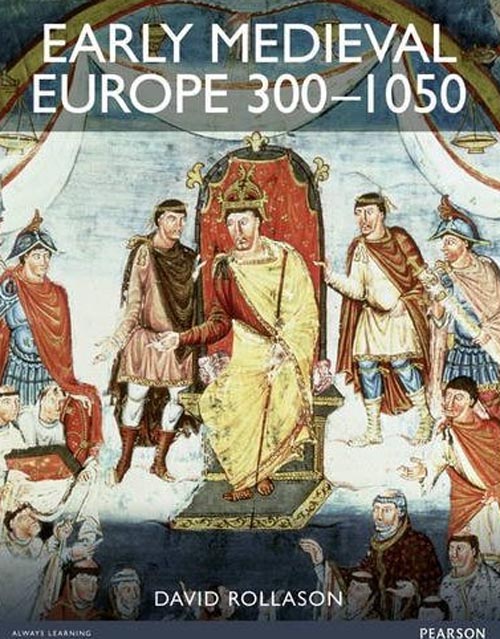Early Medieval Europe 300-1050: The Birth of Western Society
Review

Early Medieval Europe 300-1050: The Birth of Western Society David Rollason (Pearson), 2012
394pp., £22.99, paper, ISBN 978-1-4082-5121-8
As a medievalist by training, I have always thought it unfortunate that medieval history does not figure above Key Stage 3 in the National Curriculum and has long since ceased to be a significant part of GCSE though it does appear in the Schools History courses on Medicine and Crime and Punishment. There is an opportunity to take courses post-16 but one wonders how many schools have the necessary expertise to do so. The modernisation of the school curriculum has seen the modernisation of History courses so often commented on in the media. Students may know something about Hitler but have no knowledge at all of Augustine (of Hippo or of Canterbury), individuals arguably of greater importance. In the quest for immediacy and relevance, much of value in the History curriculum has been lost and, given that younger teachers have been largely educated under this regime, it would be difficult to revive it. Teachers teach best what they are comfortable with and most are not comfortable with early medieval history.
It is fortunate that this growing awareness of a lamentable lack of expertise and knowledge coincides with the publication of Early Medieval Europe 300-1050. It provides an excellent broad-brush survey of Western Europe from the late Roman Empire in the fourth and fifth centuries to the early eleventh century. No longer should teachers (if there are any left who still do) consider this period as the Dark Ages. The dissolution of the Roman Empire in the West was marked by extraordinary changes in institutions, social structure, rural and urban life, religious belief and organisation, learning, scholarship and art that accompanied the emergence of the barbarian kingdoms and their consolidation under the Carolingian and Ottonian rulers on the Continent and the West Saxon and Danish kings in England. It saw the emergence of the nascent kingdoms of France, Germany and England. The book focuses on the key historical questions that the period raises, the sources for them and the ways in which historians have worked with them that have given rise to competing approaches and interpretations.
With 50 maps and illustrations, detailed guidance on further reading, timelines and an extensive companion website, this is an excellent introduction of the development of western society and provides the type of information that teachers would be able to modify for use in the classroom. It fills an important gap in history departments' arsenals of material on medieval history and hopefully will stimulate some to take up the medieval flame again.

